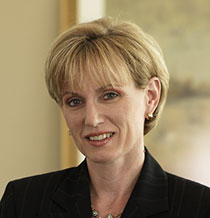By Chief Judge Laurel M. Isicoff, U.S. Bankruptcy Court for the Southern District of Florida
We have long recognized that people who appear in court feel more comfortable if the person sitting on the bench is someone who looks like them. While in recent years more awareness has developed about diversifying the bench, that process is still in its nascent stages. Historically, the Bankruptcy bench is recognized as the least diverse of the federal benches. The reasons (none scientifically analyzed) are probably many – the legal profession in the years when bankruptcy judge candidates would have been “coming up in the ranks” was not diverse; bankruptcy wasn’t considered one of the “interesting fields of law” (how is that possible!?!?!?!?); the circuits appointing the bankruptcy judges were not sensitive to diversity and inclusion issues.
Bankruptcy judges around the country are committed to diversifying the insolvency profession, and the bench, for many years. Pipeline programs, at the high school, college and law school levels, seek to bring more diversity into the insolvency space. Most recently, the Diversity Subcommittee of the Committee on the Administration of the Bankruptcy System (“CABS”), the committee of the judiciary that oversees bankruptcy courts, created and sponsored the October 2019 “Pathways to the Bankruptcy Bench,” a nationwide program in which many of you participated.
The Committee on Diversity and Inclusion of the National Conference of Bankruptcy Judges (the “NCBJ”), a voluntary association to which most sitting and many recalled and retired bankruptcy judges belong, also recently published the “Top Ten Reasons to Clerk/Intern for a Bankruptcy Judge,” which has been sent to the National Association of Law Placement and law schools all over the country. The NCBJ has likewise published a handbook for judges that outlines pipeline and affiliate bar association outreach programs around the country.
The above efforts are not alone. The Judicial Conference of the United States (the “JCUS”), which reviews and updates a ten-year Strategic Plan for the Federal Judiciary, most recently adopted a strategic plan with seven core values that included “Diversity and Respect”—”a workforce of judges and employees that reflects the diversity of the public it serves.” The JCUS is also currently putting together a judiciary-wide diversity committee to create and cultivate programming consistent with this particular core value. CABS is working on another national diversity program for early 2022 that will focus on bankruptcy and magistrate judgeships.
Many judges likewise participate in local and national internship programs that focus on diverse candidates. For example, the judges in the Southern District of Florida mentor minority students through the Kozyak Minority Mentoring Program. There are similar mentoring programs in the Middle and Northern Districts that judges also participate in.
What can you do, you ask? Easy – it just takes time. Reach out to a diverse person who is younger than you and mentor him or her. If that mentee is in your law firm, make sure to give him or her opportunities to participate in cases. Make sure that there are opportunities for you to interact socially so that he or she will feel comfortable reaching out to you for advice or concerns. Whether or not your mentee is a member of your law firm, make sure to invite him and her to participate in bar activities, get your mentee speaking and writing opportunities. Reach out to high schools and colleges and take the opportunity to talk to students about the practice of law and the various practice areas (especially bankruptcy).
I already see change happening. When I first became a bankruptcy judge fifteen years ago, almost every face I saw was white. That is no longer the case. Those in our community that identify as LBGT are also becoming more involved in bankruptcy. But we are not done. We all need to work towards making every child, every student, understand and believe that he or she can go into law, can become a judge. If we continue to pull together, the finish line will get closer and closer. So I thank you for all that you have done and continue to do. Together we will “be the difference”.


